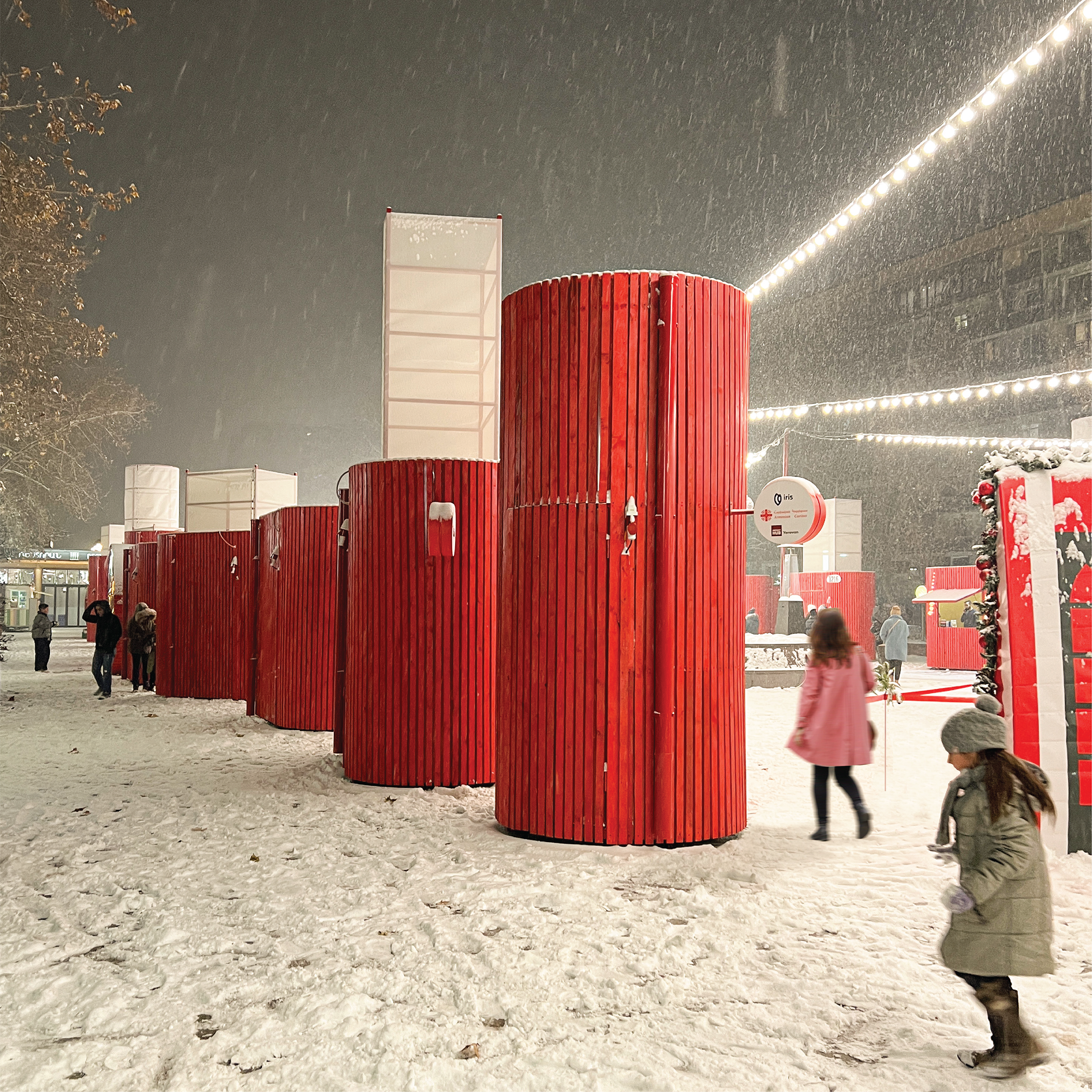three blocks of the coaf campus are located on the various points of the river, which will be activated through new circulation system with reservoirs and pumps on the site. these buildings are variations of caravansary typology, where the indoor spaces are located in a frame surrounding the garden.
every building changes it’s relationship with water according to the location and program. enclosed courtyards act as main collective spaces for the surrounding functions. every room has access to courtyard and the green spaces located between outer walls and indoor spaces. this layer of gardens surrounding rooms acts as a natural ventilation and cooling system for classrooms and other facilities.
architecture
2022

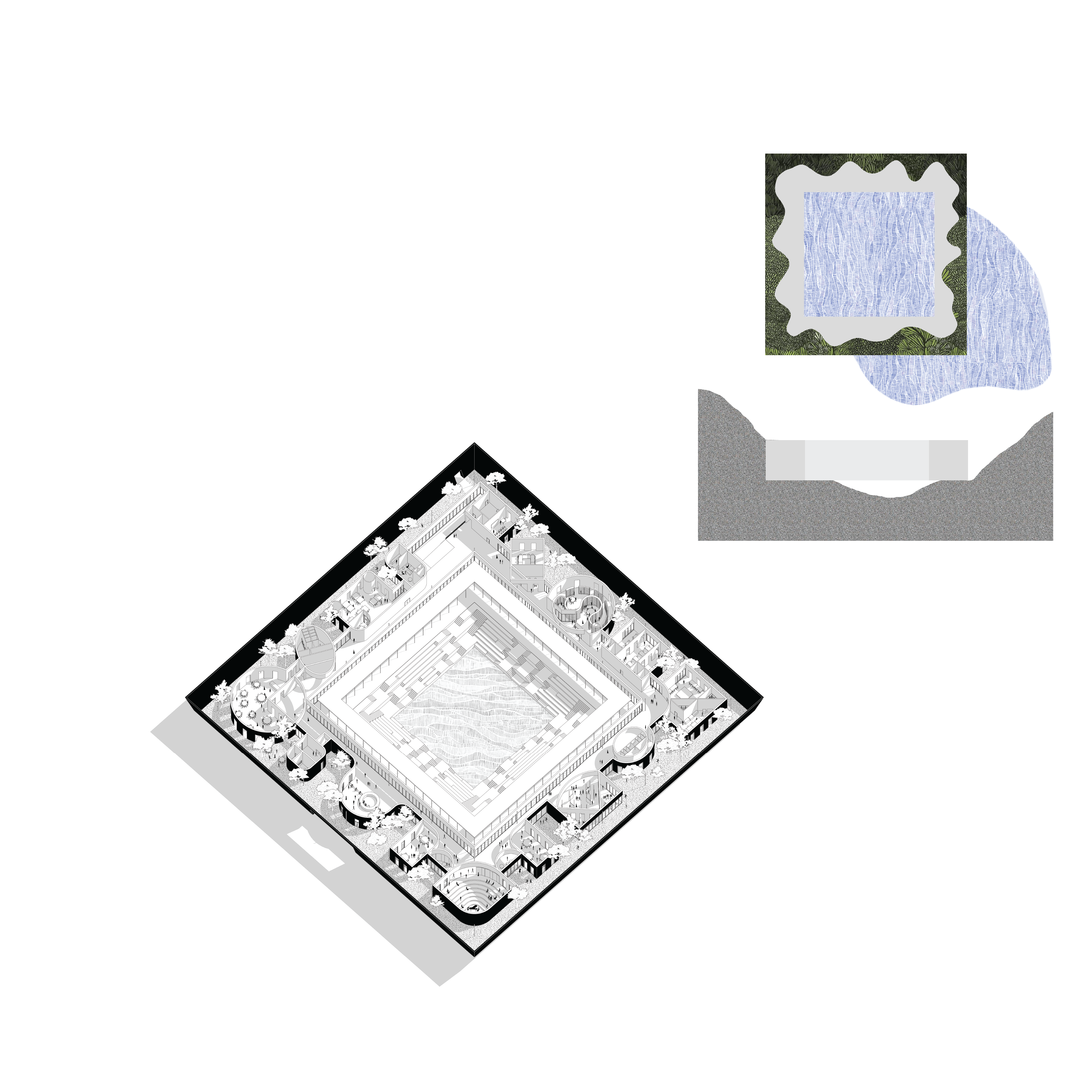
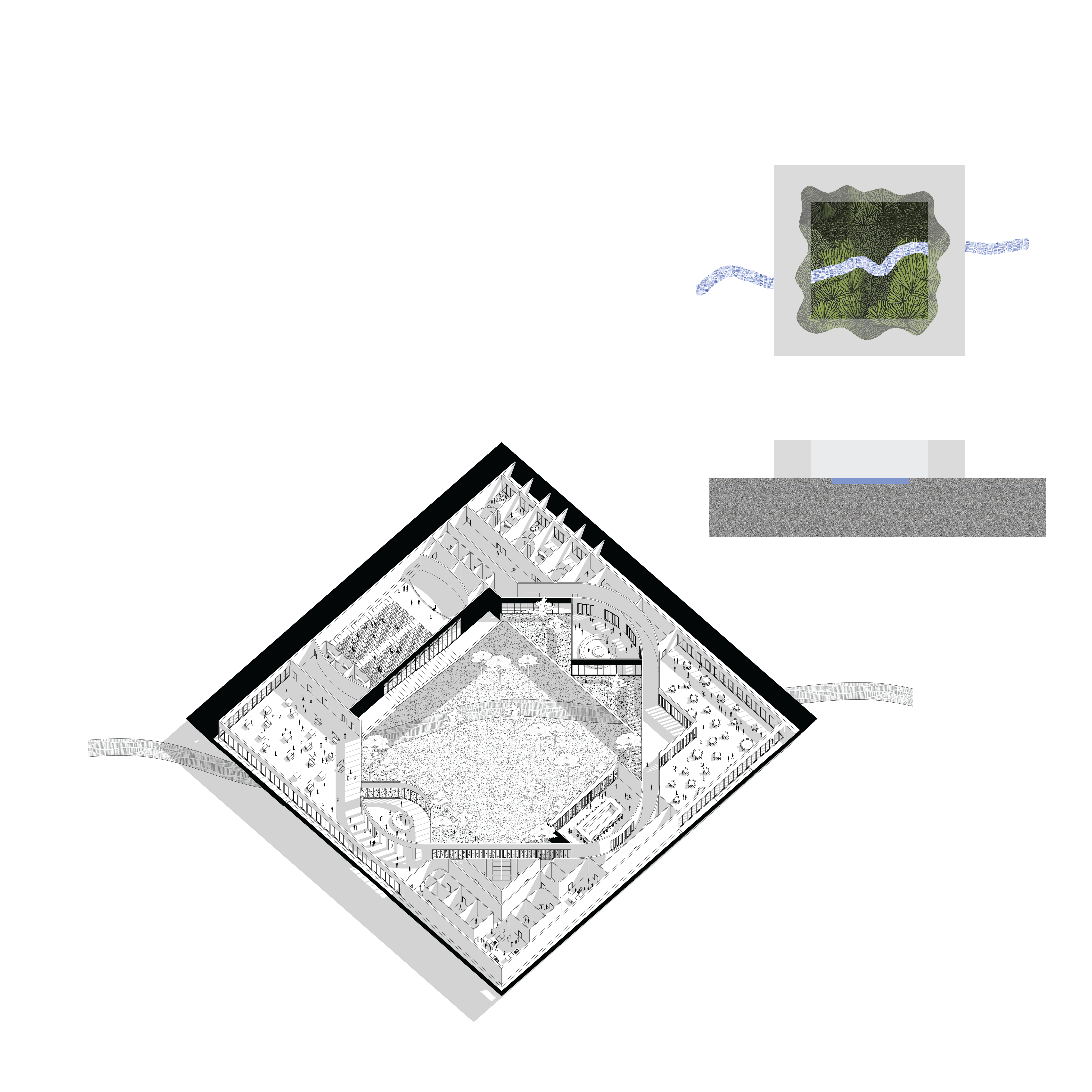

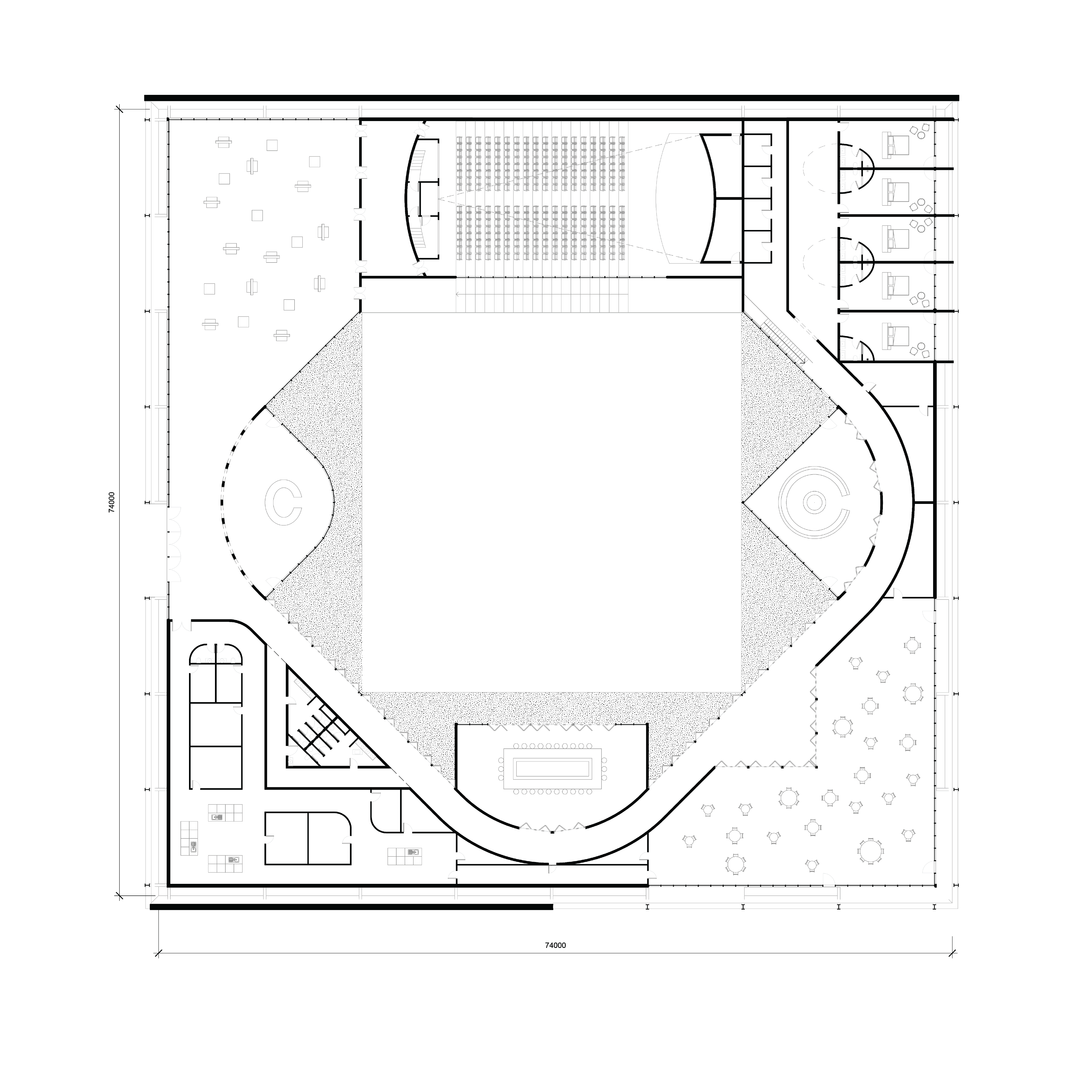



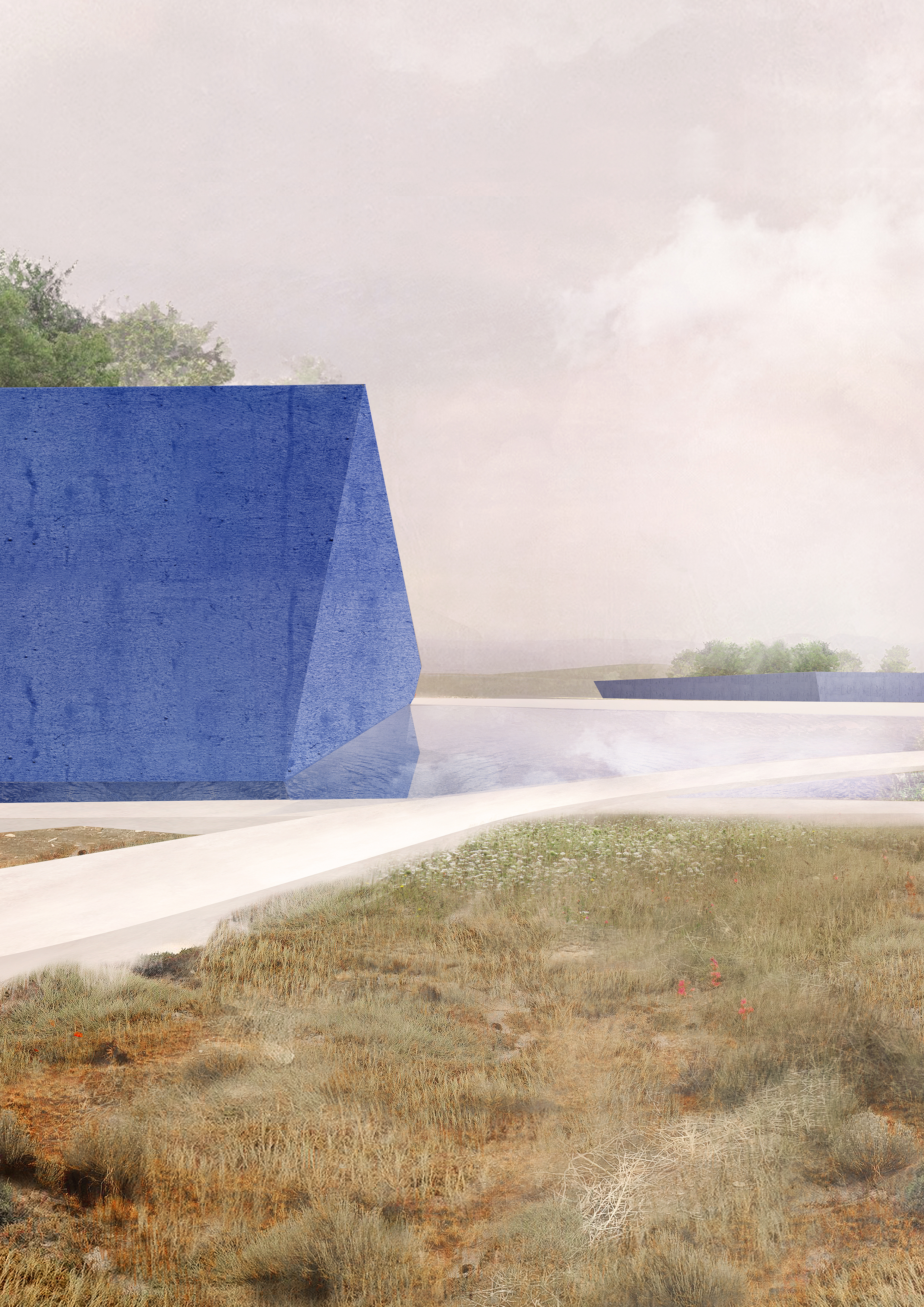


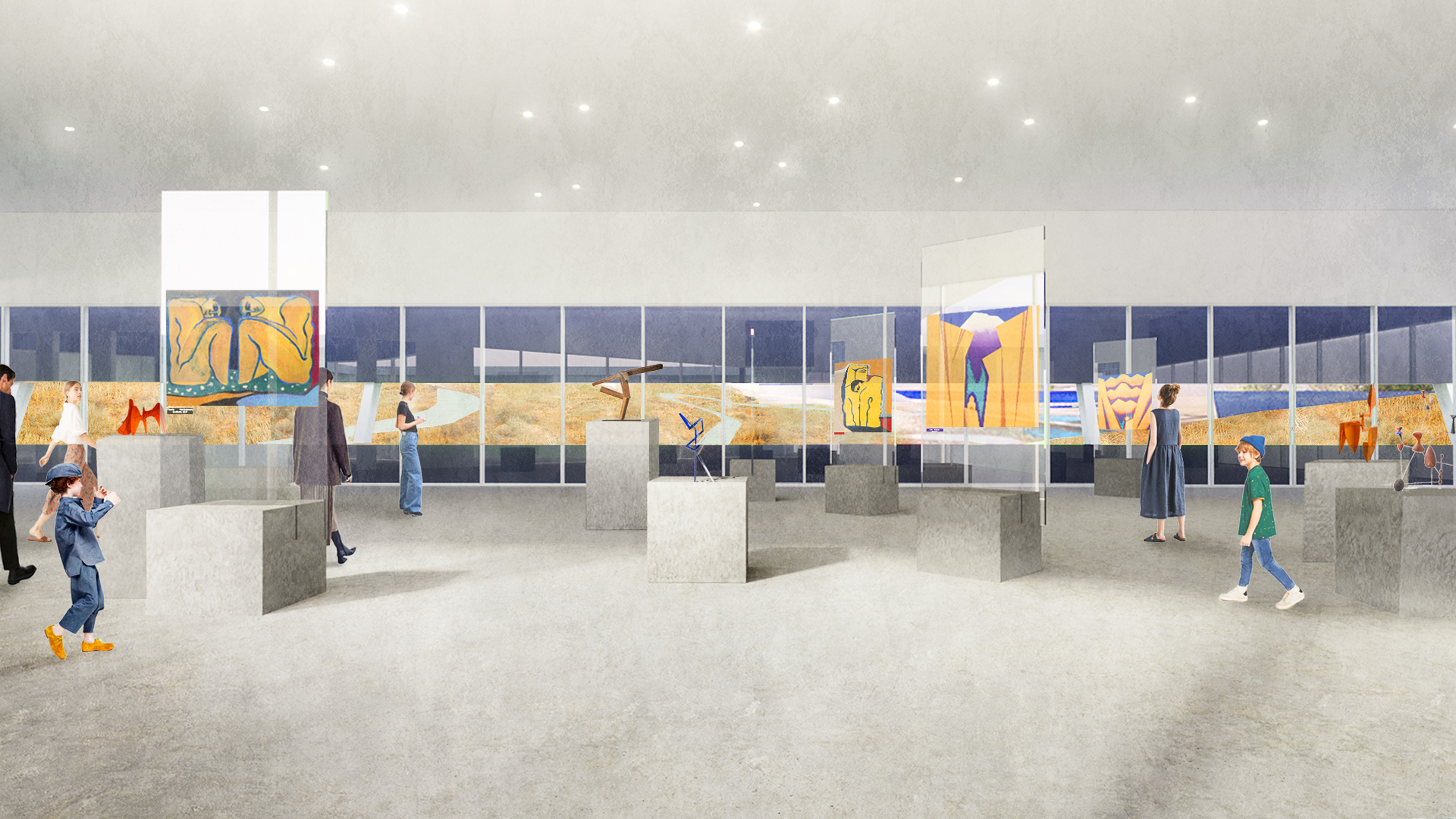





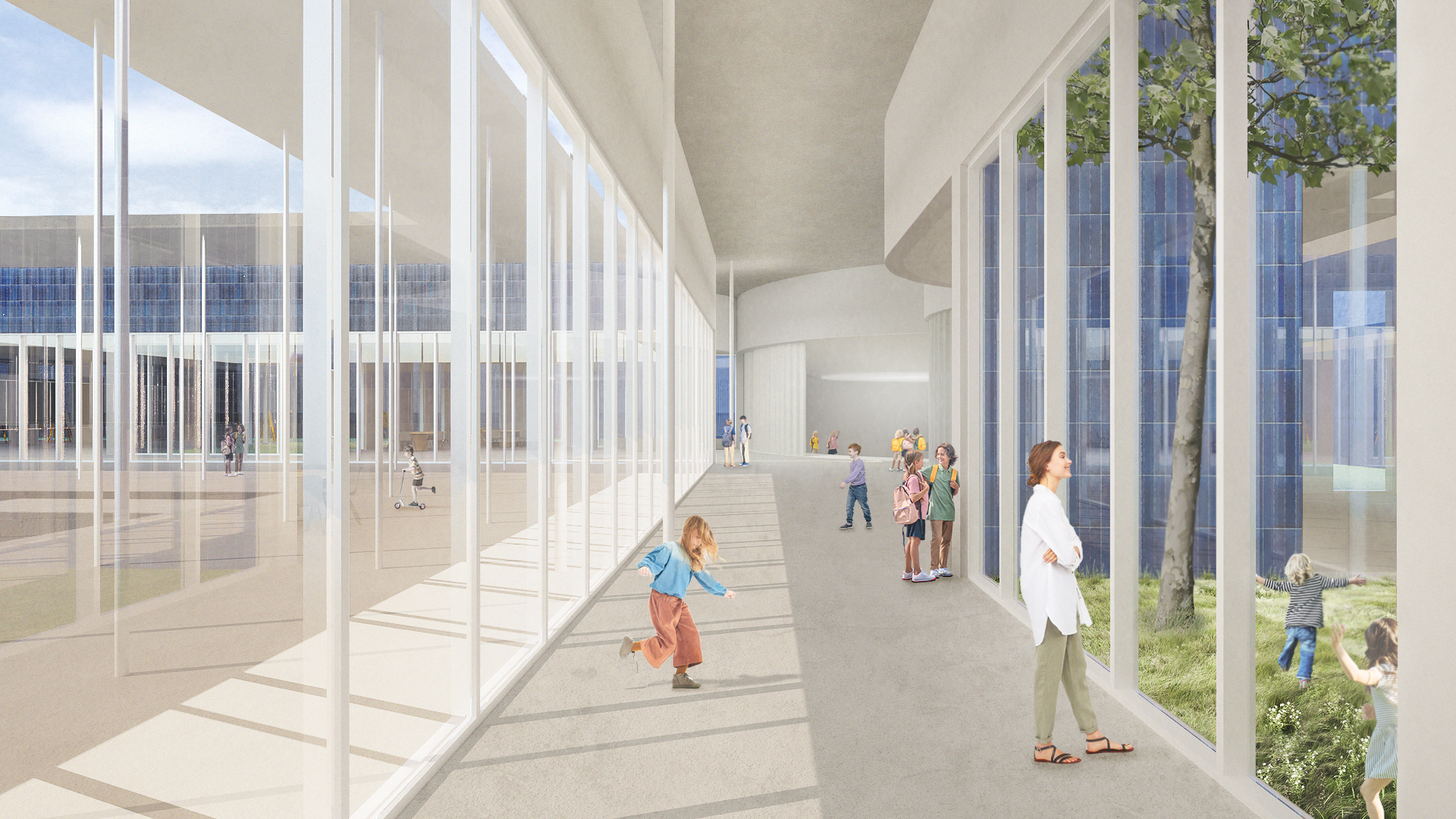




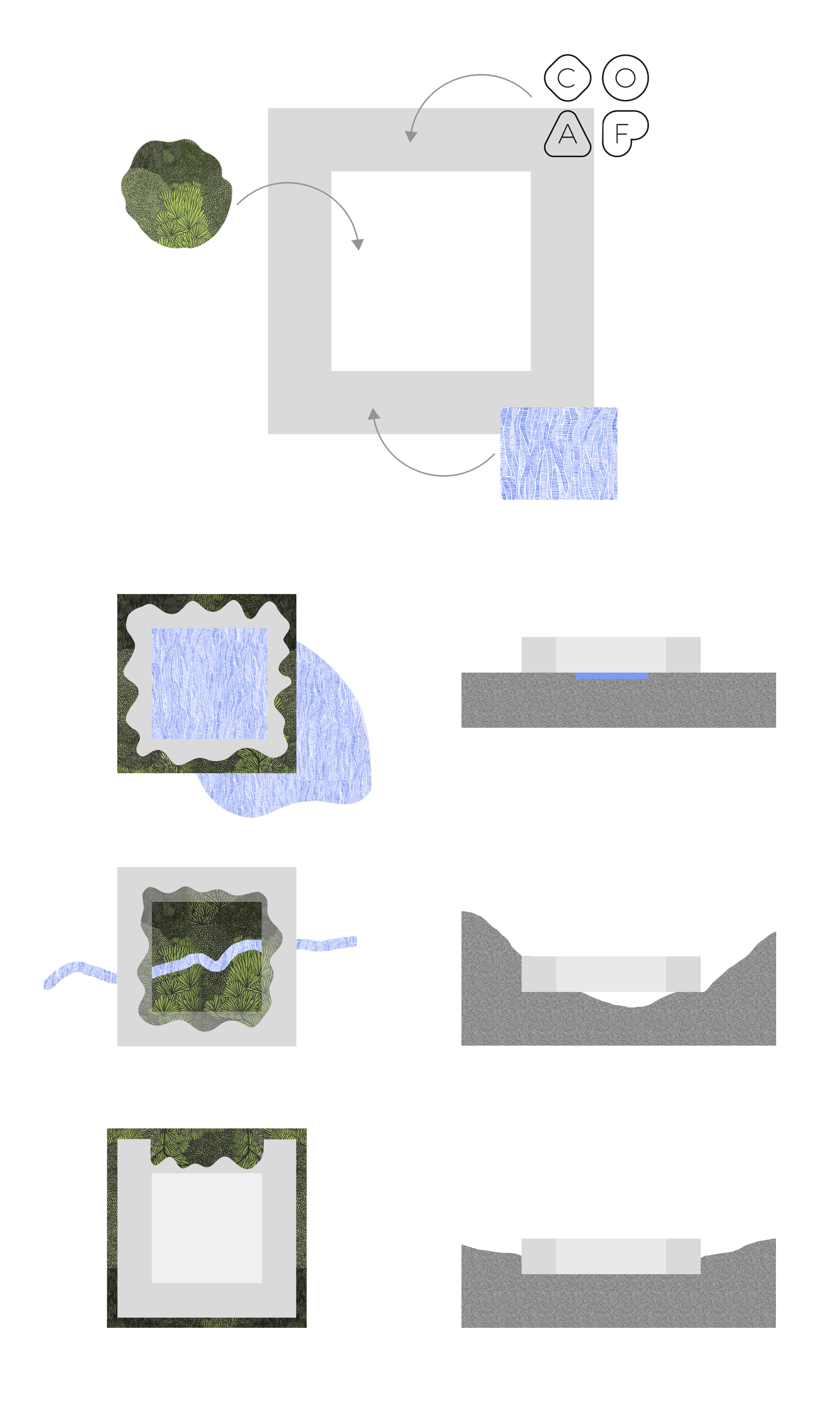

when detailed research on the area was conceived, it became obvious the larger impact this area can have and the potential that could be unleashed. situated between museum of matenadaran, polytechnic university, major streets, parks and many educational facilities, this district is not only currently isolated but it also does not allow the flows of public between these focal points. in this area is education and business where not connected at all, they didn’t have any collision areas. a huge potential of this interaction was lost. several international companies relocated parts of their offices here in order to gain this opportunity of connection with students and research facilities, but the lack of spatial solutions led to isolation of both. a certain formula in a manner of diagrammed masterplan was created, which could imply major transformations in this important area in city fabric. the importance of this was not only spatial, where major physical connections would happen, but also economical where main stakeholders would interact and create knowledge, information and larger impact in this field. if business could connect with research and education, this impact would be obvious in larger local and probably international scale.
architecture
2022

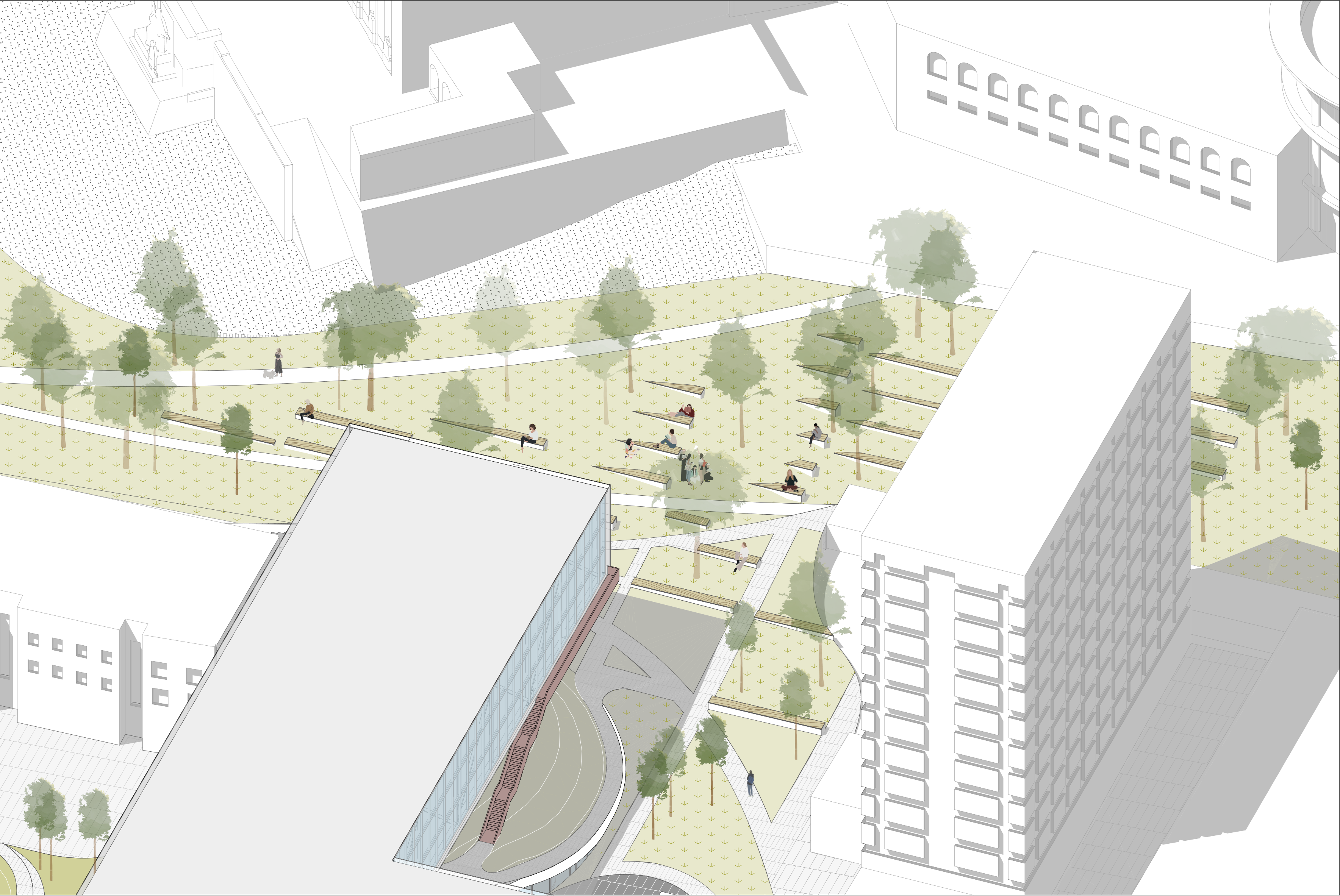
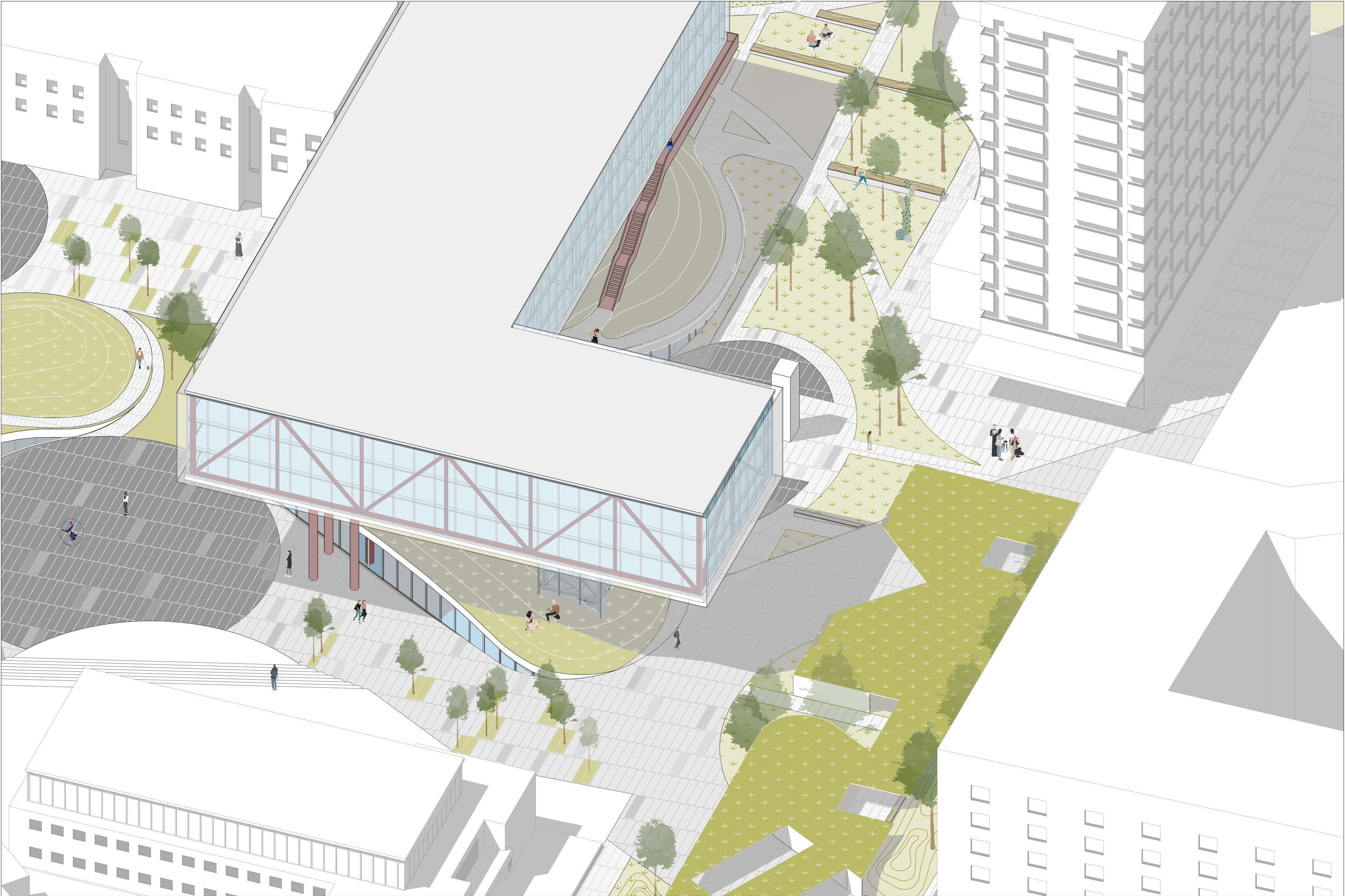







a renovation of 19 century historic monument located in kumayri preservation area of gyumri, armenia.
the building consists of number of interconnected rooms surrounding a cozy enclosed garden. while the original facade has been restored, the garden facade was rethought newly.
red and black tuf stone mosaics refer to traditional regional pattern, used mainly in religious and cultural architecture.
the black tuf stone fountain has two references: it's reminding about the old black and white movie "heghnar aghbyur" (Heghnar fountain) which was shot in this courtyard, and it's shapes are interpreted from artur tarkhanyan's iron fountain built in gyumri.
tarkhanyan's fountain has inspired the shapes of interior lighting objects, the large chandelier and wall lamps resembe the fountain details.
the restaurant's interior is plain with no extra details and decoration, leaving the building the way it was restored after numerous layers of renovations were done on its historical appearance.
the bar area is different from main restaurant space, using predominantly yves klein blue shade and glass texture, it's shifting the atmosphere into something more sarcastic and approachable.
an unusual dragon-shaped sculptural gutter is restored from historic photographs found in books about gyumri.
every corner of interior is showcasing a discovery of a forgotten or previously hidden details of building, such as small arches, chimney holes, windows and etc.
architecture
2021
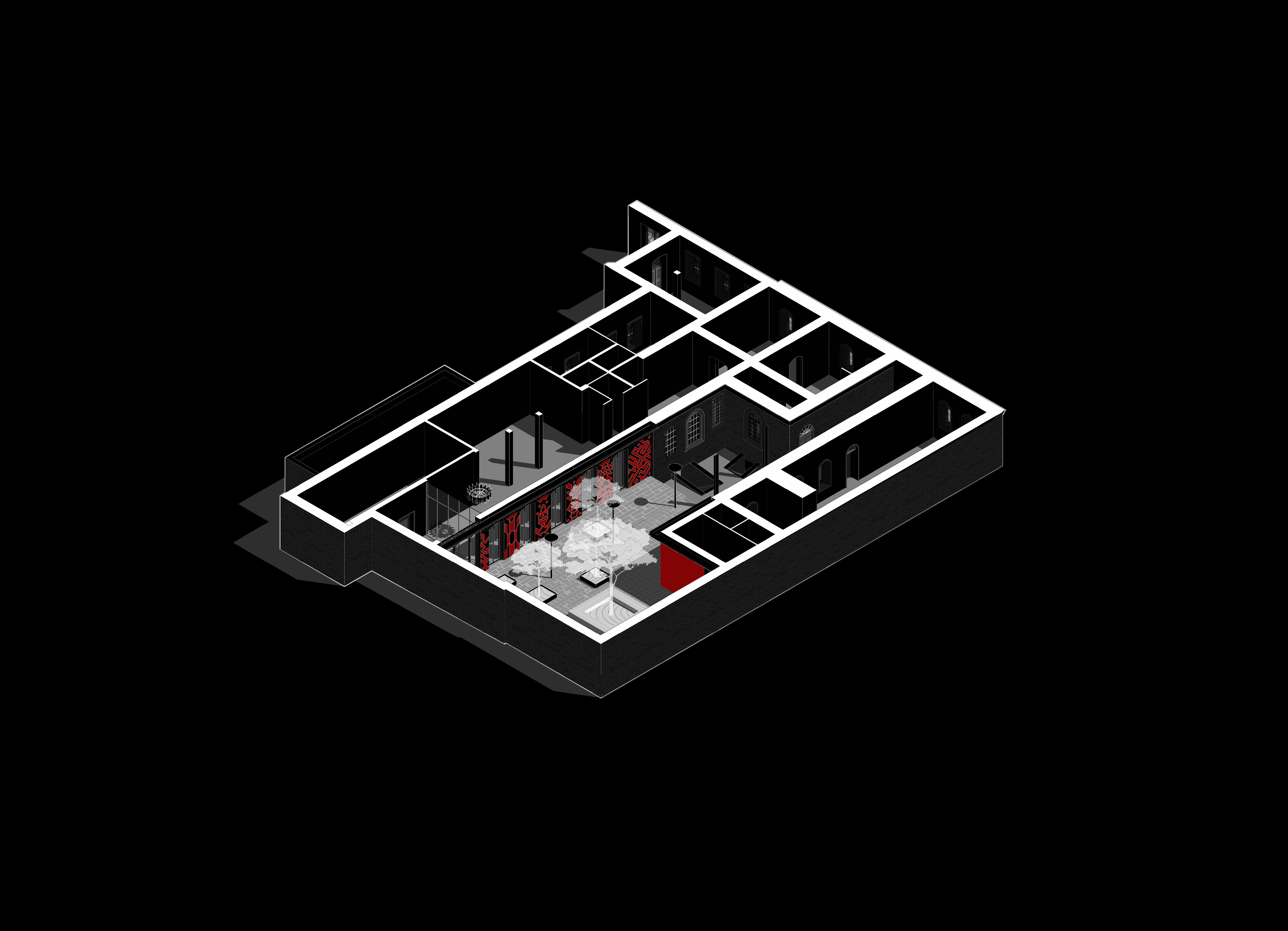




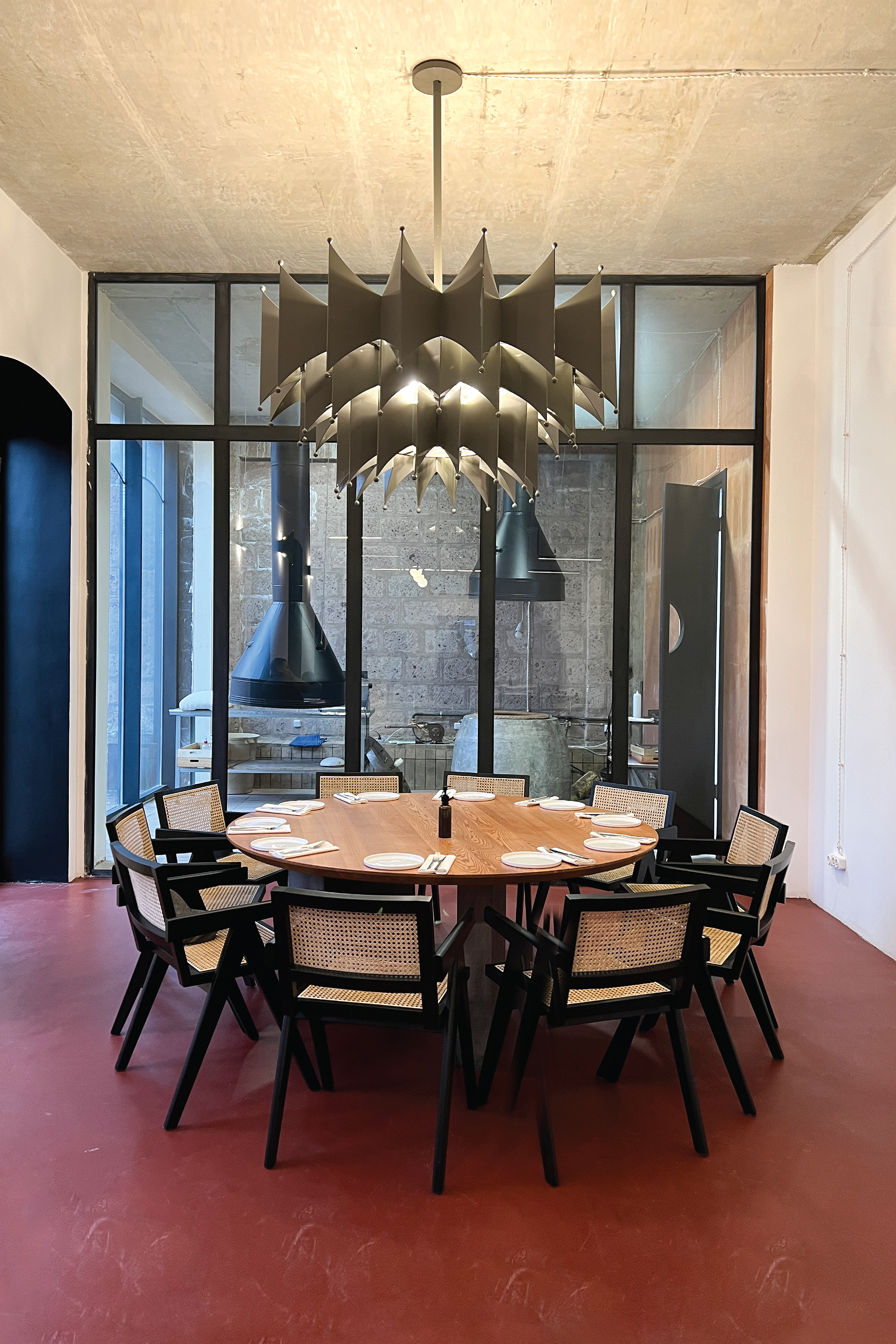


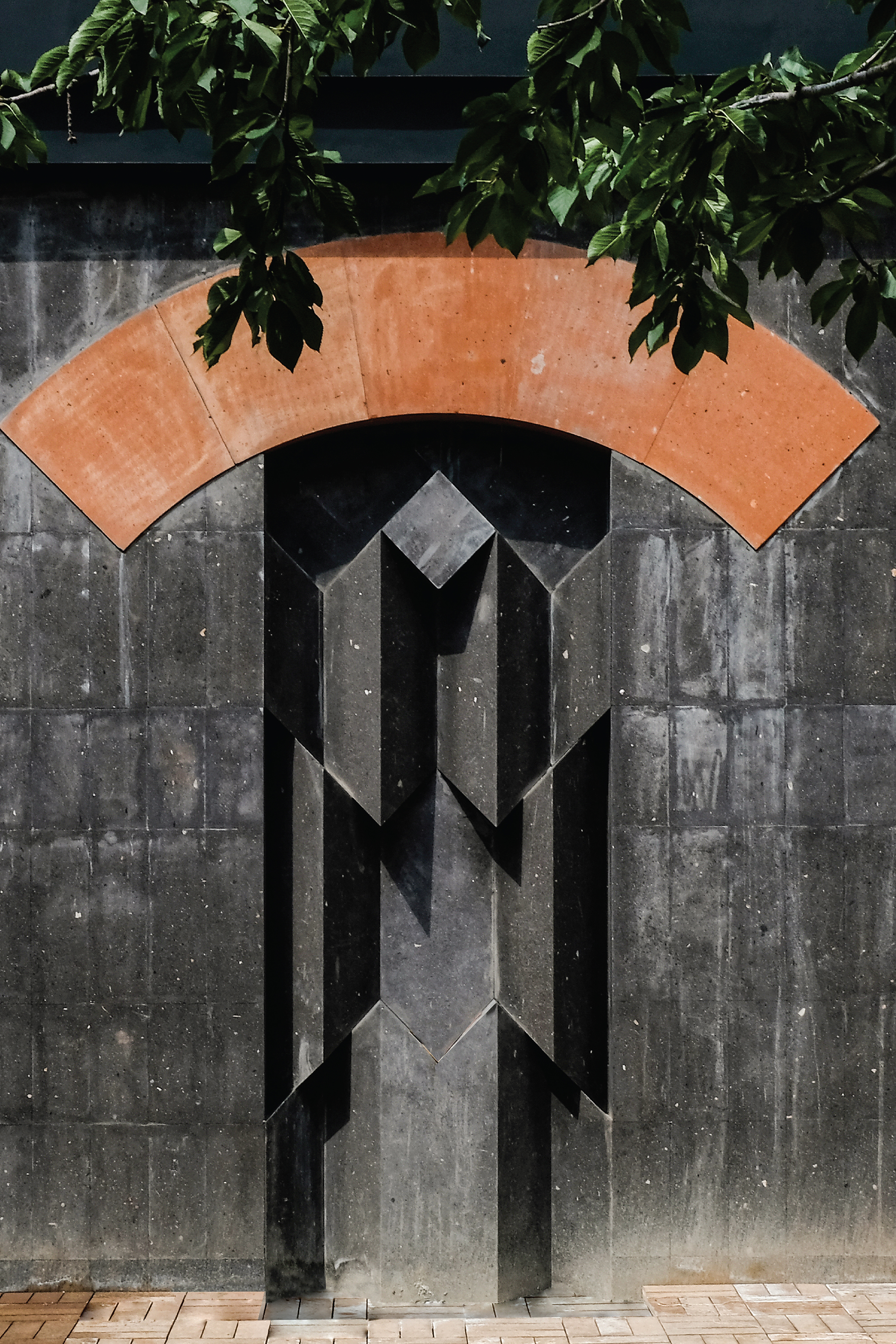


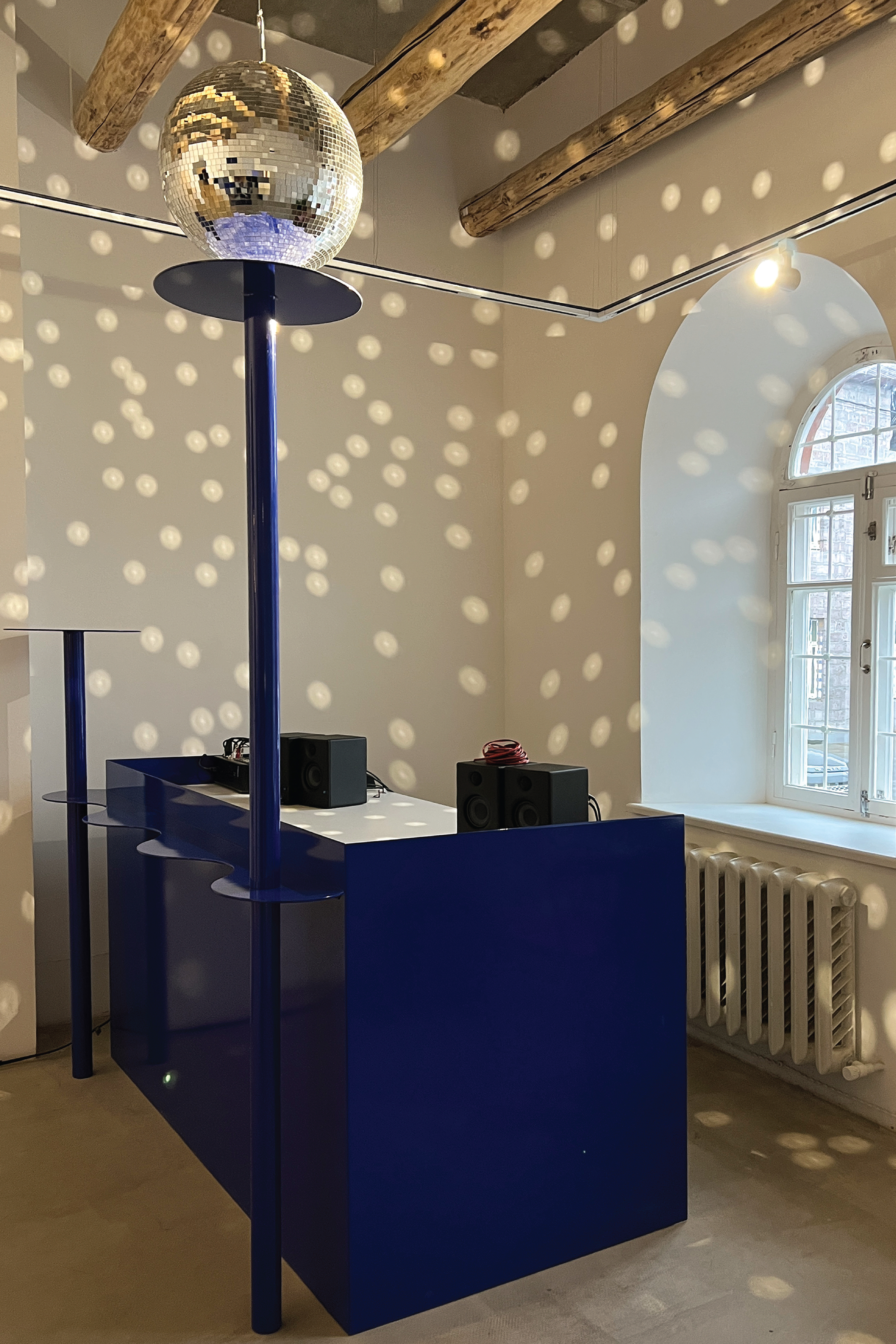


a former kindergarten was unused for decades, but had an interesting structure, with cozy courtyard and constructivist style long windows and interconnected units. the project implies adding 2 additional floors on top, an attic for duplex apartments, and opening of the basement to natural light, allowing ground floor apartments to have private courtyards.
the architecture of the building is based on former kindergarten’s constructivist heritage, with additional vibrant colours of natural stone cladding on the outer facade and leaving the courtyard facades fully blank.
courtyard is car free, with only pedestrian access, which allows to establish an active community of residents, taking into account that private gardens are also facing the courtyard, which creates additional connections and hierarchies of public and private spaces.
this experiment of transforming the unused and outdated kindergartens into communal housing could be a model case for future developments in soviet era housing blocks, where usually inner courtyards are used as parking lots and fail to serve the residents.
the basement, which was previously unused, is given natural light access with sloped courtyards, where duplex apartments gain private gardens and become more desired living spaces.
the top floor of the building is an attic connected to lower level apartments, which become duplex flats with double height living rooms, and sunlight source for upper level bedrooms. several apartments have patios on top floor with access from bedrooms directly.
generally this apartment block is targeting younger audience and is in affordable segment of housing market. apartments have compact but comfortable rooms with storage spaces and every amenity for modern living.
in only 70 m2 the apartment can have two bedrooms, large living room and private garden facing the courtyard. this is a model case for ground floor usage, which is usually left for commercial spaces and rarely considered as sufficient apartment.
this is a case of affordable housing, where apartments and communal spaces can be unique and comfortable in comparison to usual housing blocks.
architecture interior
2023


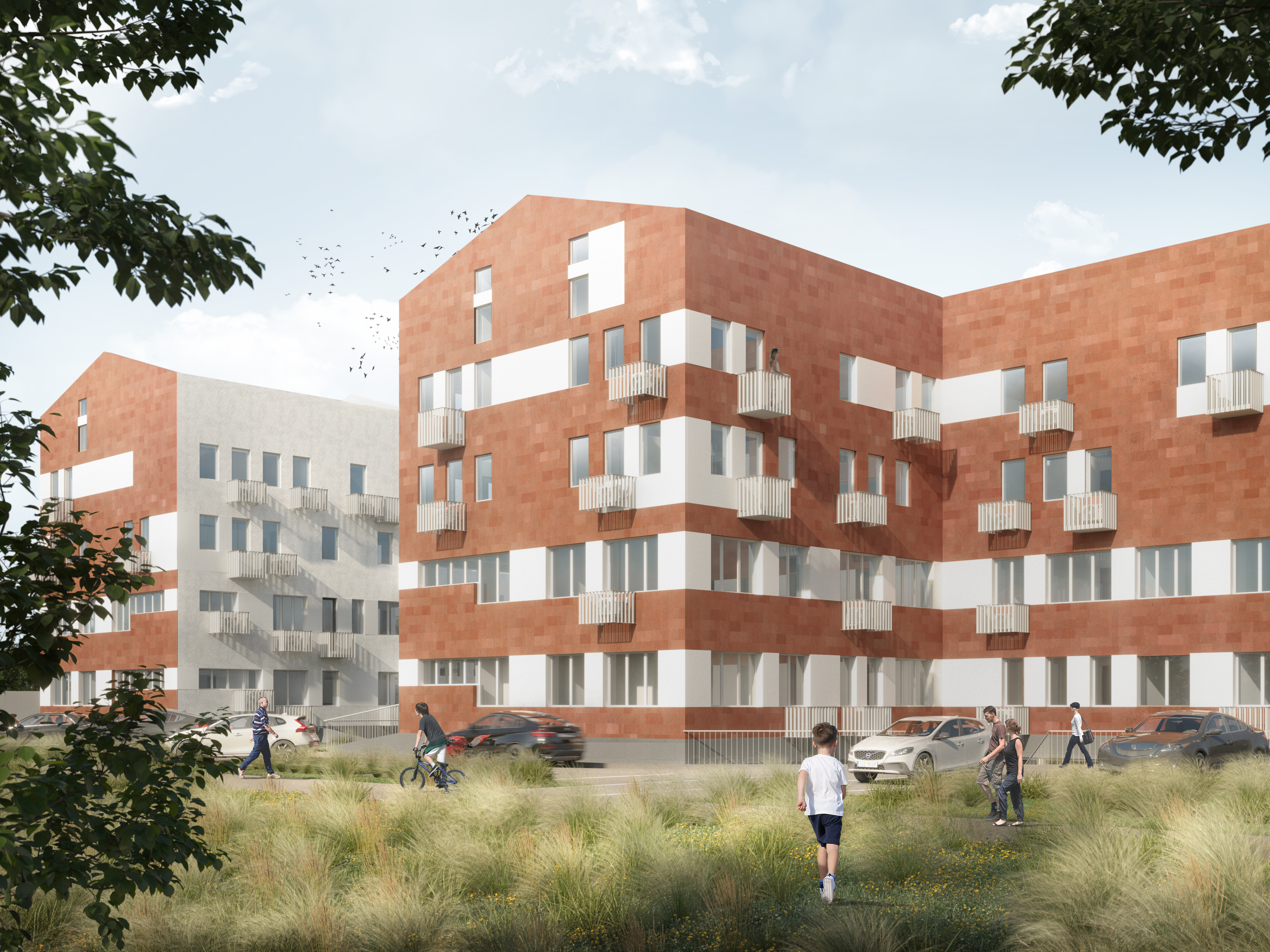
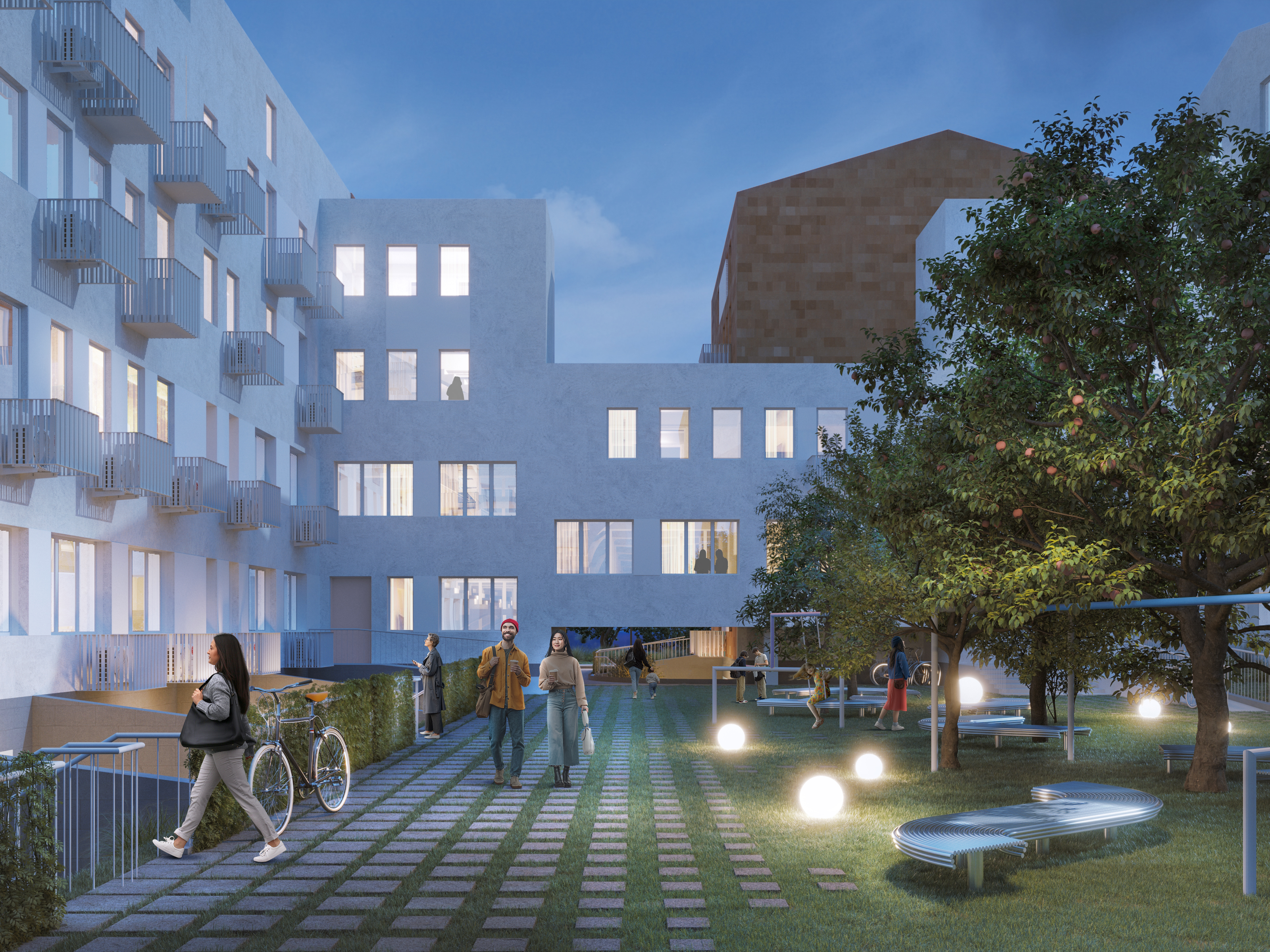


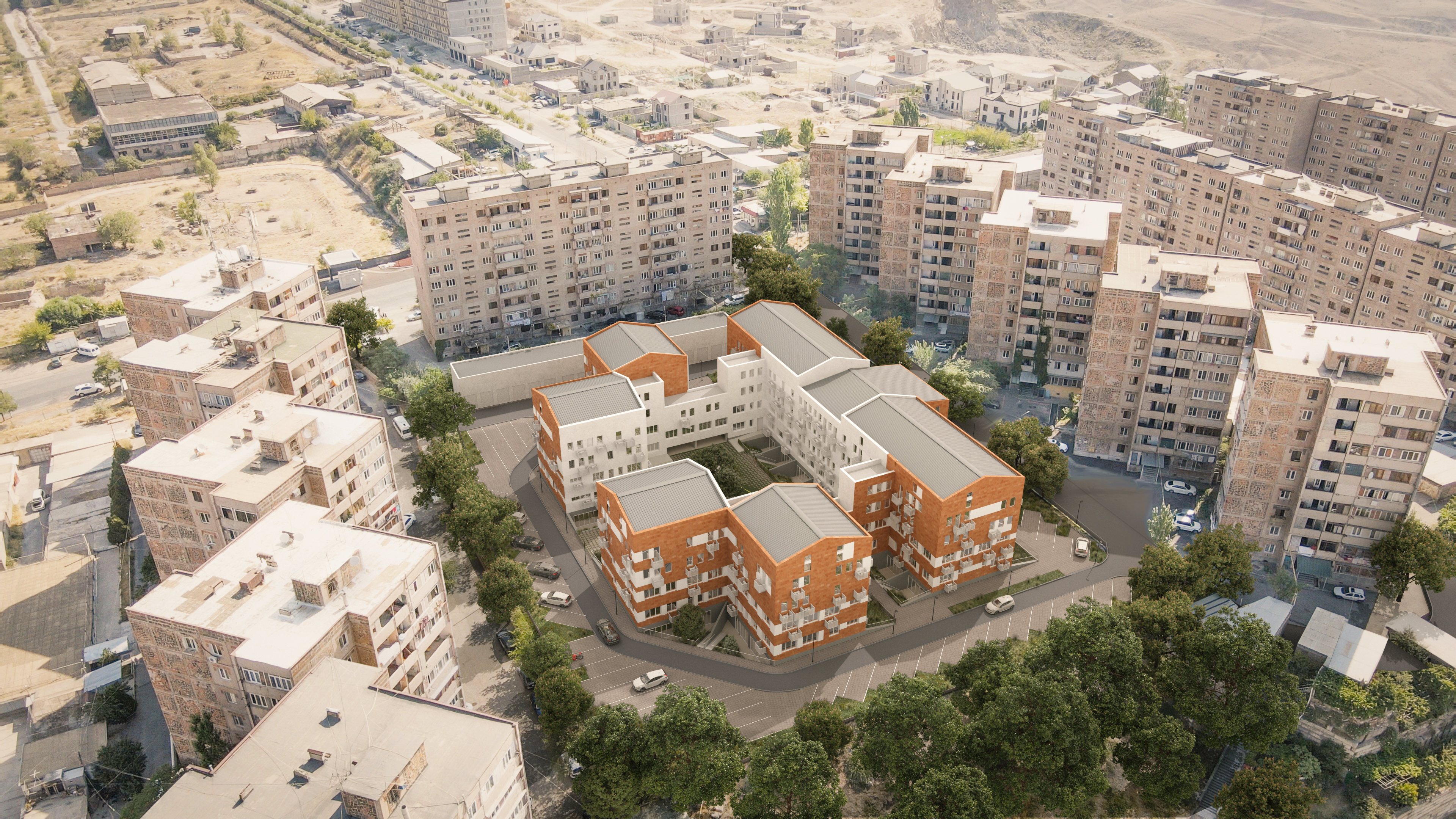







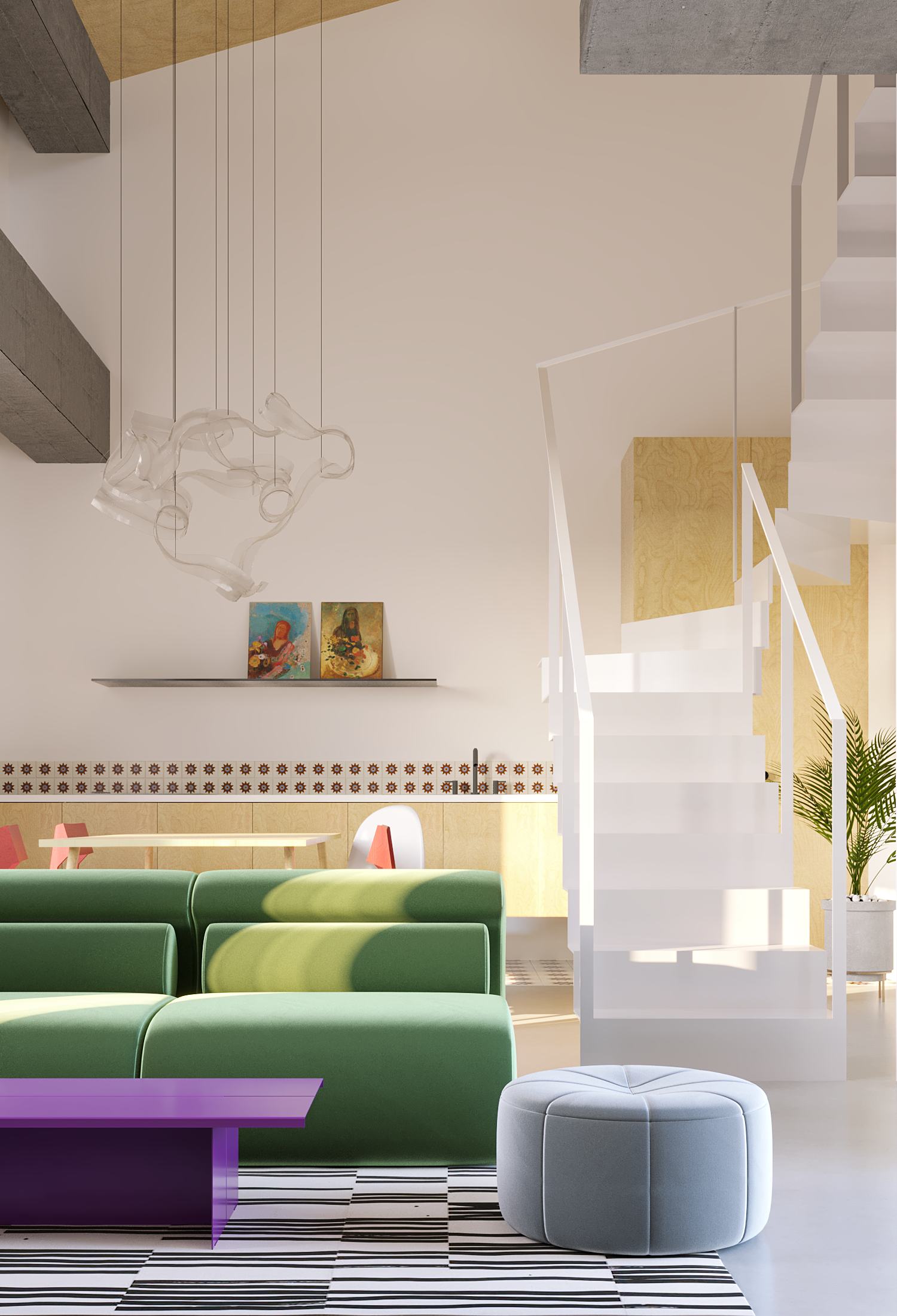

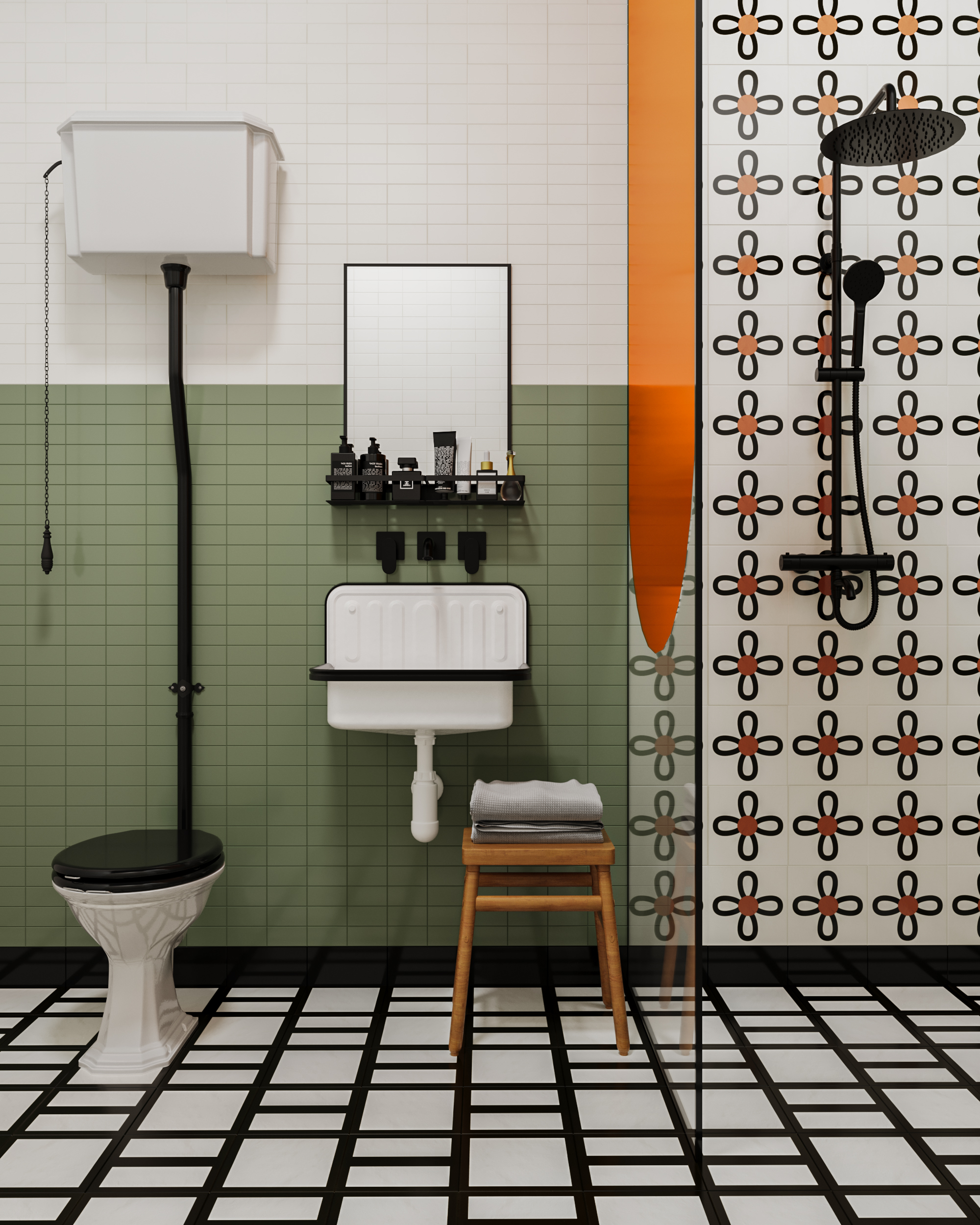

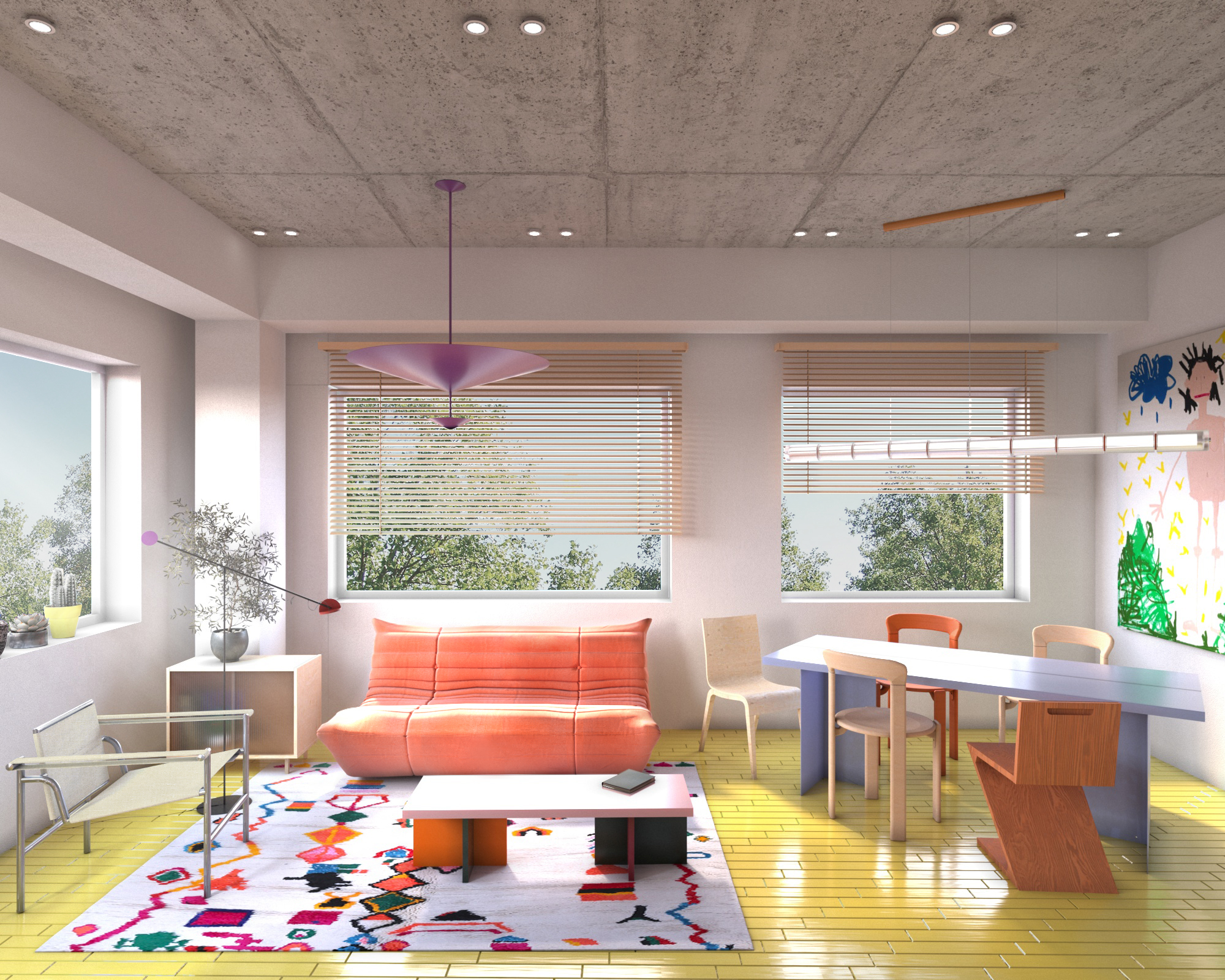


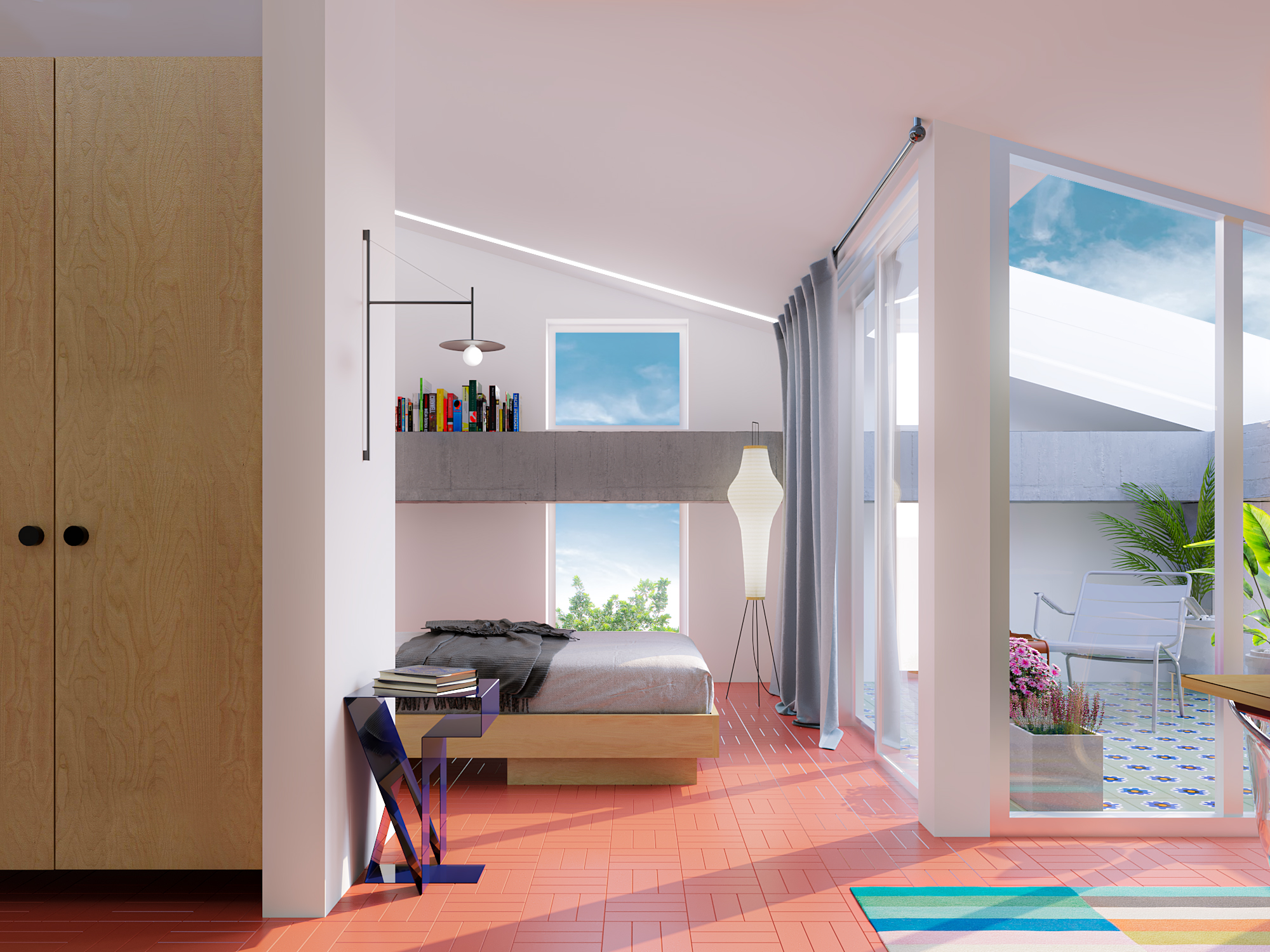


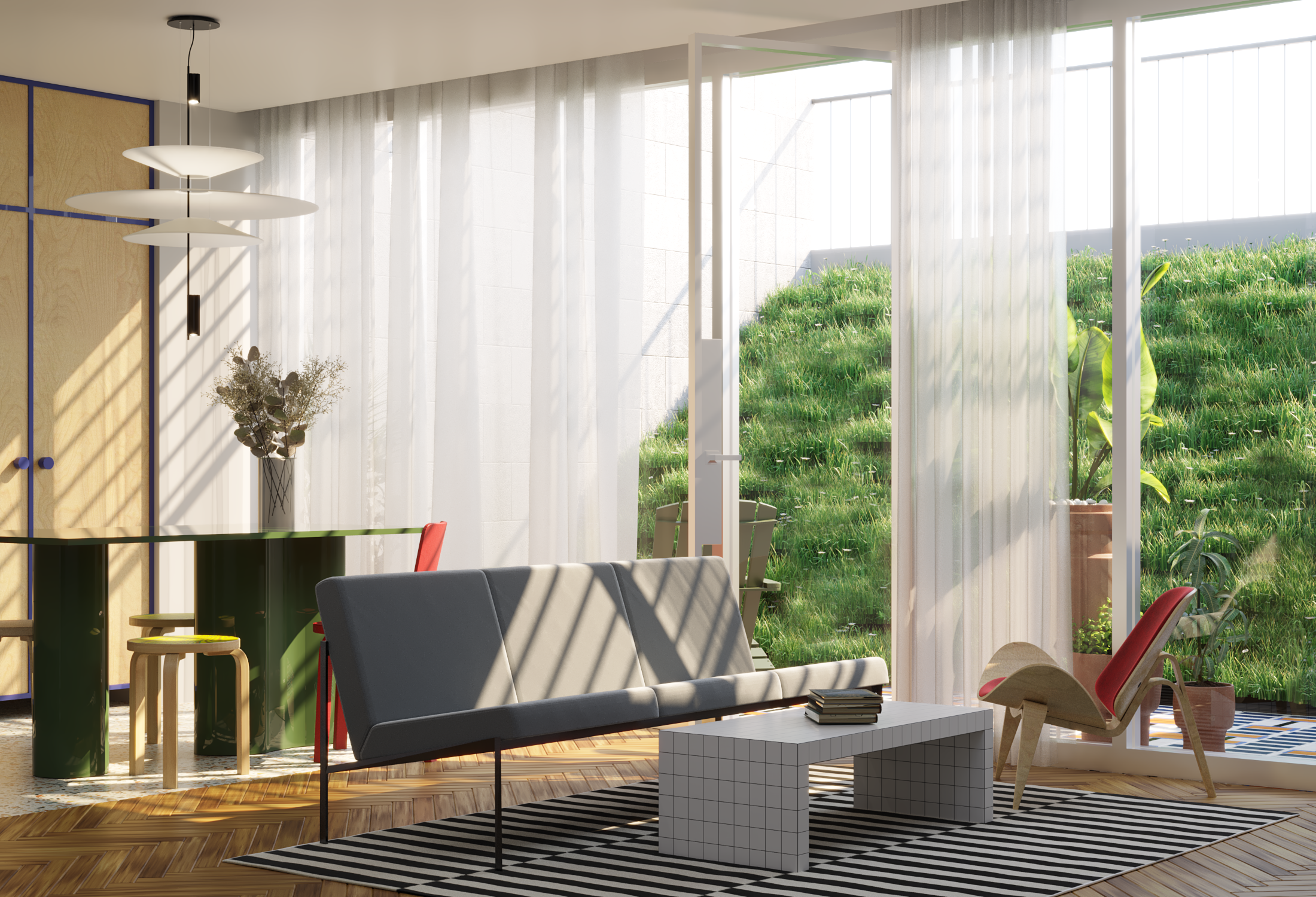
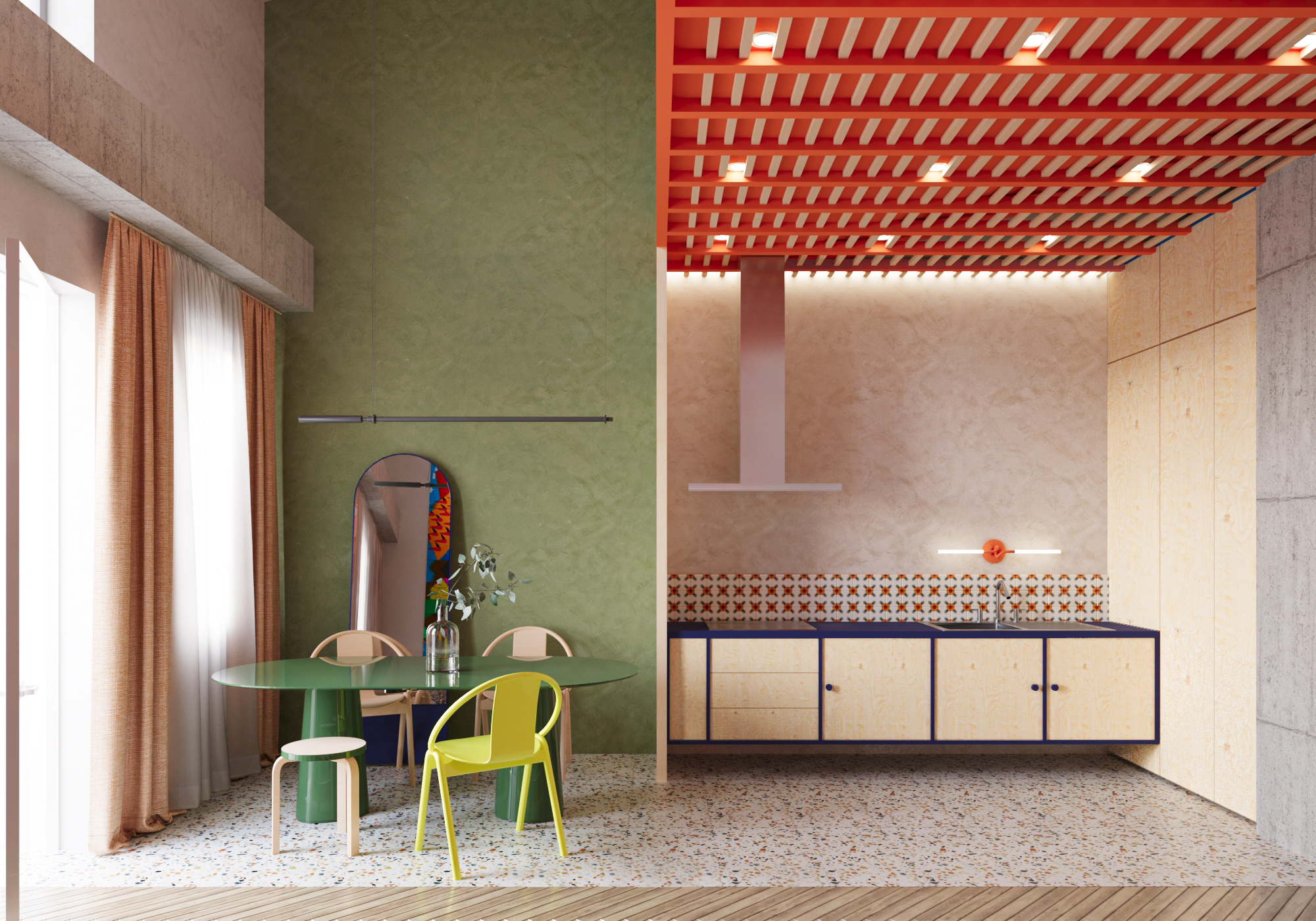
a temporary festival design in central park area of yerevan, was envisioned as a journey to a certain christmas destination. It has a linear structure, with central axis leading to the dominant christmas tree.
the entrance is marked with permeable semi-transparent scaffoldings structure, allowing the public to flow into the festival area via layered hierarchy.
there are 6 typologies of festival booths, from tiny 1m diameter cylinder to tall 4m capsule. this includes the horizontal booth, which turns into sitting area for visitors.
the red color is chosen to simplify and emphasize the festival reference, and to honor the most architectural, and especially constructivist color accepted in the profession.
another architectural reference is the dominant christmas tree, which is the replica of schukhov’s television tower, an ultimate christmas tree among all architectural and engineered shapes.
the original concept included a hot air balloon, for an option to perceive the festival from bird’s eye view, but also to reference another constructivist icon which was leonidov’s lenin institute of librarianship.
architecture
2021
















